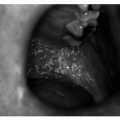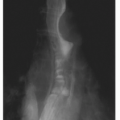Dizziness is the result of a dysfunction in the sensory, central integrative, or motor systems affecting the orienting mechanisms and resulting in a perception of disequilibrium.
With rare exceptions, dizziness is a benign, self-limited condition not associated with excess mortality.
Dizziness can be subclassified as vertiginous, lightheadedness, disequilibrium, or “other.”
Brain imaging in patients with dizziness without focal neurological findings is generally not helpful.
Vestibular rehabilitation therapy is based on central nervous system compensation for the dysfunctioning labyrinth.
The etiology of syncope may remain undiagnosed in up to 40% of cases.
Because elderly patients may be amnesic for a syncopal event and recall only having fallen, the history obtained from the patient may be misleading.
Patients with a normal 12-lead electrocardiogram are extremely unlikely to have an arrhythmia causing syncope and have a very low risk of sudden death.
Four percent of patients undergoing prolonged ambulatory cardiac monitoring as part of a syncopal evaluation have arrhythmias that are associated with symptoms.
The fifth leading cause of death in persons older than 65 is accidents. Falls constitute two thirds of these accidents.
Each year, at least one third of community-dwelling persons who are 65 and older fall.
Most falls result from the accumulated effects of multiple impairments of the sensory, central integrative, cardiovascular, and musculoskeletal systems, any one of which alone might not have caused falling.
Multifactorial interventions can reduce the incidence of falls between 12% and 37%.
All older persons who report a single fall should be evaluated with the “Timed Up and Go Test.”
hearing is affected) or vestibular neuronitis (if hearing is not affected). When vestibular dysfunction occurs, the central nervous system is eventually able to compensate to some degree. However, recovery in the elderly may be prolonged because central nervous system compensation is slower, and patients are left with unsteadiness if the compensation is incomplete. A viral infection is felt to be the etiology in younger individuals. In the elderly, infarction is more often the cause. Ménière disease is the likely diagnosis when vertigo is accompanied by tinnitus and gradual development of unilateral low-frequency hearing loss. Recurrent vestibulopathy is the diagnosis when auditory symptoms are absent. The typical patient has an attack about once a year, which lasts a day, and has a more benign prognosis than those with Ménière disease.4
TABLE 13.1 CONDITIONS THAT LEAD TO DIZZINESS, SYNCOPE, AND FALLS IN THE ELDERLY | ||||||||||||||||||||||||||||||||||||||||||||||||||||||||||||||||||||||||||||
|---|---|---|---|---|---|---|---|---|---|---|---|---|---|---|---|---|---|---|---|---|---|---|---|---|---|---|---|---|---|---|---|---|---|---|---|---|---|---|---|---|---|---|---|---|---|---|---|---|---|---|---|---|---|---|---|---|---|---|---|---|---|---|---|---|---|---|---|---|---|---|---|---|---|---|---|---|
| ||||||||||||||||||||||||||||||||||||||||||||||||||||||||||||||||||||||||||||
TABLE 13.2 DRUG-ASSOCIATED DIZZINESS | ||||||||||||||||||||||||||||||||||||||
|---|---|---|---|---|---|---|---|---|---|---|---|---|---|---|---|---|---|---|---|---|---|---|---|---|---|---|---|---|---|---|---|---|---|---|---|---|---|---|
| ||||||||||||||||||||||||||||||||||||||
nervous system.10 Presbyopic changes, a decline in contrast sensitivity, along with cataracts, glaucoma, and macular degeneration affect the visual system. Finally, peripheral neuropathy affects more than 25% of persons aged 65 to 75, and 54% of patients older than 85 in the United States.11 Though these changes are often subclinical with respect to balance control, they do lower the threshold of imbalance. In addition, cardiovascular factors, cognitive impairment, muscle weakness, and medications also contribute. 9,12 All this results in older persons walking more slowly, turning more carefully, and being more susceptible to dizziness, imbalance, and falls.3 Superimposed upon this functional decline, minor stresses such as anemia, medication effects, electrolyte disturbances, and glucose or thyroid imbalance may cause dizziness and falling.9,12
Stay updated, free articles. Join our Telegram channel

Full access? Get Clinical Tree





